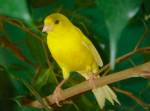Canary birds are one of the most common birds that many has taken a liking of. Their harmonious bird songs, vibrant exterior, and a spunky personality has captured the hearts of many bird enthusiasts everywhere. Additionally, their low maintenance care has further boost their value points of bird lovers everywhere.
Canaries are accustomed to a wide variety of diet, which makes it all the more easier to care for. As long as breeders keep an eye on the diet and their nutritional value to their growth, canaries would eat both organic and over-the-counter processed pellets. This low-cost investment of a bird will prove to be twice or more profitable, if properly taken care of. The demand for canary birds is extremely high in the market, thus making it a valid side income to consider. Canaries also reproduce at a relatively quick stage, so an initial investment of one pair should be more than enough.
One thing these birds have that values high in the market is the bird songs each canary produces. Canaries who make beautiful and loud bird songs are the most seeked out of the market, and breeders could help encourage these songs by maintaining their good overall health. Aside from the basic nutritional intake and exercise, the age of a canary also plays a part in the quality of their bird songs.
Unfortunately, to beginners at least, figuring out the age of a canary bird may be a trickier task than expected. A canary’s mentality may be different for every individual bird, so breeders would rely more on their physique. Aside from physique, stamina and energy changes as they age as well. Though the results may vary for each canary, be sure to read through this article for basic ways to find out a canary’s age.
1. Their Claws
One common way to define a canary’s age would be through the shape and development of their claws. Younger adolescent and adults would generally have healthy, shiny, and moist claws that are fit to hunt and accompany their daily activities. Similar to human hands, the youthfulness and physique of their claws will decline in age – and small lines and wrinkles would grow.
Additionally, a canary’s scales near their furs would thicken by age – much similar to human skin. A canary’s physique would grow to dry up and would require more hydration than their younger counterparts
2. Moulting
Moulting – or the shedding of fur to grow new ones – is another distinction of a canary’s age. As a canary grows older, they tend to shed more often than their younger counterparts – increasing the rate from once a year to twice a year. However, the rate would differ for every bird – so the rate of a bird’s shedding may not necessarily say much about a canary’s age. Overall health and nutritional intake could change a canary’s moulting rate.
3. Their Genitals
A canary’s genitals is another common distinction to tell one’s age. Unless an underlying mutation has occurred, adult canaries would probably already have a fully developed set of genitals by 4 months after birth. A male canary would have a more prominent organ than adult females.
4. Their Actions
Similar to humans, canary youths are much more active physically and mentally. They would engage in more exercise and activities in comparison to their senior counterparts, simply because they have more energy than the others. Senior canaries would usually be found alone and calm, mainly to conserve their energies.
5. Their Appetites
Regardless if you’re raising the healthiest adult canaries, the bird’s appetite will decrease by two times once they get older. However, this change of habit may also be a health warning on the bird’s condition – as sick birds are less likely to be enthusiastic about their meals as normal healthy birds. If you spot this sudden change, be sure to consult a medical professional immediately.
6. Pale Exterior
Another distinction that could help guess the age of a canary is the paling of their exterior. Younger canaries often have a bright exterior that is noticeable to the naked eye. Similar to ur hairs, the colour will fade as we get older, leaving us and older canaries with pale and light coloured exteriors. This is an inevitable aging process, but if you’ve noticed something odd about this colour change (e.g. fading at a young age), it is wise that you consult help.
7. Their Noises
Younger canary birds have a greater stamina than their senior counterparts. Due to this, a canary’s bird songs and noises may decline as they age. The decline is both in volume and structure. However, it is important to note that the change in their bird songs could also be an indication of a declining overall health.
8. Body Structure
Last, but not least, breeders could indicate a canary’s age by their body structured. Usually, older and mature healthy canaries would already have all their organs fully developed. However, much like humans, they grow weaker and fragile as they age. Canaries also shrink in size, and their health would be constantly on the fence. Due to this, it is wise that breeders take time to fully monitor senior canaries to avoid any age related illnesses to take over them. Supplying extra supplements and vitamins could help boost their immune systems as they grow older.
So there you have it, some basic ways to find out a canary’s age. As mentioned before, knowing the age of a canary could really help breeders tailor a health and diet plan for them that goes in line with the needs on each bird at their age. Senior birds would require a different type of care than their younger counterparts. However, these are just general rule of thumbs that may not be applicable to all birds – so it is wise that you do more prior research and consult professionals of this area whenever you have doubts.

